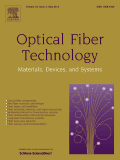
OPTICAL FIBER TECHNOLOGY
Scope & Guideline
Exploring Breakthroughs in Optical Fiber Technology
Introduction
Aims and Scopes
- Optical Fiber Sensing Technologies:
Research on various sensing technologies utilizing optical fibers, including temperature, strain, pressure, humidity, and chemical sensing. These studies often explore novel sensor designs and their applications in industrial, environmental, and biomedical fields. - Fiber Laser and Amplifier Developments:
Investigations into the design, optimization, and application of fiber lasers and amplifiers, including their use in telecommunications and industrial applications. This includes studies on novel saturable absorbers, mode-locked lasers, and high-power fiber laser systems. - Photonic Crystal and Microstructured Fibers:
Exploration of photonic crystal fibers and microstructured fibers, focusing on their unique properties and potential applications in telecommunications, sensing, and nonlinear optics. - Nonlinear Optical Phenomena:
Studies on nonlinear optical effects in fibers, such as soliton dynamics, stimulated Brillouin scattering, and four-wave mixing. This includes research aimed at understanding and mitigating nonlinear impairments in fiber communication systems. - Optical Network Technologies:
Research on optical network architectures, including passive optical networks (PON), elastic optical networks (EON), and network optimization strategies. This encompasses both theoretical studies and practical implementations. - Machine Learning and AI Applications:
Investigations into the application of machine learning and artificial intelligence techniques for enhancing the performance of optical fiber systems, including data analysis, sensor signal processing, and network optimization. - Biomedical Applications of Optical Fibers:
Application of optical fibers in biomedical fields, particularly in sensing, imaging, and therapeutic applications, exploring their potential in non-invasive diagnostics and treatment.
Trending and Emerging
- Advanced Fiber Sensors:
There is a growing emphasis on the development of advanced fiber sensors that utilize innovative designs and materials to achieve higher sensitivity and specificity for various environmental and biomedical measurements. - Integration of Artificial Intelligence:
The application of AI and machine learning techniques in the analysis and optimization of optical fiber systems is rapidly increasing. This trend is evident in research focused on data analytics, predictive modeling, and smart sensing solutions. - Nonlinear Optical Fiber Technologies:
Research on nonlinear phenomena in optical fibers is gaining traction, particularly in the context of high-speed communication systems and advanced laser technologies, as researchers seek to harness these effects for improved performance. - Sustainable and Biocompatible Materials:
There is an emerging focus on the use of sustainable and biocompatible materials in the fabrication of optical fibers and sensors, reflecting a broader societal trend towards environmental responsibility and healthcare applications. - Hybrid and Multi-Functional Fiber Systems:
The development of hybrid fiber systems that combine multiple functionalities, such as sensing and communication, is on the rise. This reflects the demand for integrated solutions in complex applications. - Optical Fiber in Quantum Technologies:
Research exploring the role of optical fibers in quantum communication and sensing is emerging as a significant trend, driven by advancements in quantum technologies and their applications.
Declining or Waning
- Traditional Fiber Optic Communications:
There has been a noticeable decrease in research focused on conventional fiber optic communication technologies, such as basic WDM (Wavelength Division Multiplexing) systems. This decline may be attributed to the rapid advancement of more sophisticated and efficient communication technologies. - Basic Optical Fiber Fabrication Techniques:
Research specifically addressing traditional fiber fabrication methods has become less frequent. This shift may indicate a move towards more innovative or specialized fabrication techniques, such as those involving novel materials or advanced manufacturing processes. - Standard Optical Network Protocols:
The exploration of standard protocols for optical networks appears to be declining as researchers focus on developing new, more efficient protocols and architectures that leverage emerging technologies like AI and machine learning for network optimization. - Conventional Sensing Approaches:
There is a diminishing focus on conventional optical fiber sensing techniques, as newer methodologies and technologies that offer enhanced sensitivity and accuracy, such as those employing machine learning, are taking precedence.
Similar Journals

APPLIED PHYSICS B-LASERS AND OPTICS
Exploring the Frontiers of Optical InnovationApplied Physics B - Lasers and Optics, published by Springer Heidelberg, is a renowned journal in the field of applied physics, particularly focusing on lasers and optical technologies. With a solid impact factor, this journal has established itself as a significant source of cutting-edge research, contributing to advancements in both theoretical and practical aspects of the discipline. The journal is indexed in Scopus, boasting a commendable rank of #24 out of 81 in the category of Physics and Astronomy (miscellaneous), reflecting its reputation and the quality of published work. Since its inception in 1994, Applied Physics B has covered a wide array of topics, catering to researchers, professionals, and students engaged in the exploration of innovative optical phenomena and laser applications. This journal not only disseminates vital knowledge but also fosters interdisciplinary collaboration, making it an essential resource for those seeking to stay at the forefront of research in lasers and optics.
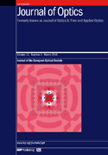
Journal of Optics
Pioneering Research in Atomic and Molecular OpticsThe Journal of Optics, published by IOP Publishing Ltd, stands as a pivotal platform for disseminating cutting-edge research in the fields of atomic, molecular physics, and optics as well as electronic, optical, and magnetic materials. With an impact factor reflective of its esteemed position—ranking in the 60th percentile in both relevant Scopus categories—this journal, boasting an ISSN of 2040-8978 and an E-ISSN of 2040-8986, is uniquely positioned to foster innovation and collaboration among researchers, professionals, and students worldwide. Located in the United Kingdom and operational since 2010, the journal embraces an open access model, promoting maximal reach and engagement with the latest discoveries that shape the future of optics. As it continues to evolve through its converged years up to 2024, the Journal of Optics remains a critical resource for those seeking to advance their knowledge and influence in this dynamic field.
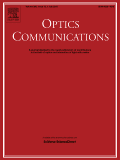
OPTICS COMMUNICATIONS
Advancing Knowledge in Photonics and CommunicationOptics Communications, published by Elsevier, is a prestigious international journal that focuses on the dynamically evolving fields of optics and photonics. With its ISSN 0030-4018 and E-ISSN 1873-0310, this journal has made significant contributions to the fields of Atomic and Molecular Physics, Electrical and Electronic Engineering, Electronic, Optical and Magnetic Materials, and Physical and Theoretical Chemistry, consistently ranking in the Q2 quartile across these categories for 2023. The journal, based in the Netherlands, is recognized for its rigorous peer-review process and aims to publish high-quality research articles that advance knowledge and applications in optical communication technologies. Although it operates under a subscription model, the insightful research published here plays an essential role in informing the work of researchers, professionals, and students alike. With a history dating back to 1969 and spanning well into 2025, Optics Communications remains a crucial resource for cutting-edge developments in optics, catering to a global audience dedicated to innovation in this pivotal science.
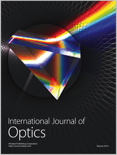
International Journal of Optics
Shaping Tomorrow’s Discoveries in OpticsWelcome to the International Journal of Optics, a distinguished publication dedicated to advancing the field of optics and its interdisciplinary applications. Published by HINDAWI LTD, this open-access journal has been pivotal in fostering knowledge since its inception in 2009. With a robust focus on atomic and molecular physics as well as electronic, optical, and magnetic materials, the journal has carved its niche within Q3 quartile rankings in these categories for 2023, signifying its growing impact and relevance in the scientific community. Researchers and professionals will find a rich repository of innovative and cutting-edge research articles that not only address fundamental aspects of optics but also explore practical applications across various domains. The journal's aim is to promote high-quality research dissemination, enhancing collaboration among scientists and ensuring that pivotal findings reach a global audience. Join us in exploring the dynamic world of optics—where your contributions help shape the future of science.
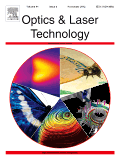
OPTICS AND LASER TECHNOLOGY
Advancing Innovations in Light and Laser TechnologyOPTICS AND LASER TECHNOLOGY, published by Elsevier Science Ltd, is a premier journal dedicated to advancing knowledge in the fields of optics and laser applications. With its impressive Q1 rankings across three critical categories—Atomic and Molecular Physics, and Optics; Electrical and Electronic Engineering; and Electronic, Optical and Magnetic Materials—the journal stands at the forefront of scientific discourse, boasting a significant impact factor that underscores its relevance. Since its inception in 1970, the journal has consistently provided a platform for the dissemination of cutting-edge research, key innovations, and reviews that influence both academic study and practical applications. Although it currently does not have open access options, its rigorous peer-review process and inclusion in esteemed indexing services make it a valuable resource for researchers, professionals, and students seeking to stay informed about the latest developments in optics and laser technology. The journal’s ongoing commitment to quality research ensures it remains a vital publication for those engaged in this dynamic field, with a converged projection extending through 2025.

Nonlinear Optics Quantum Optics-Concepts in Modern Optics
Advancing Knowledge in Nonlinear and Quantum OpticsNonlinear Optics Quantum Optics-Concepts in Modern Optics is a specialized journal published by OLD CITY PUBLISHING INC, focusing on the forefront of research in nonlinear optics and quantum optics. With an ISSN of 1543-0537 and an E-ISSN of 1944-8325, this journal serves as a pivotal platform for the dissemination of innovative concepts and findings in modern optics, significant for both theoretical exploration and practical applications. Established in 2003, the journal's scope encompasses critical areas such as atomic and molecular physics, optical materials, and instrumentation, attracting submissions from a diverse range of interdisciplinary fields. While the journal currently maintains a Q4 ranking in several categories, it continues to strive for higher visibility and impact in the academic community. Researchers and students alike will find valuable insights and contributions that foster advancements in optical science and engineering. With an emphasis on rigorous peer-review, Nonlinear Optics Quantum Optics-Concepts in Modern Optics is committed to enhancing the understanding and application of nonlinear optical phenomena in various technological domains.

OPTICAL AND QUANTUM ELECTRONICS
Transforming Knowledge in Electronic Engineering and OpticsOPTICAL AND QUANTUM ELECTRONICS, published by SPRINGER, is a premier journal dedicated to advancing the fields of atomic and molecular physics, optics, and electronic engineering. With an ISSN of 0306-8919 and an E-ISSN of 1572-817X, this journal has established itself as a vital resource for researchers, professionals, and students alike, contributing to the discourse from its inception in 1969 to its continued publications through 2024. It holds impressive rankings in Scopus, placing within the top percentiles for its categories, specifically in the 64th for Electrical and Electronic Engineering and 63rd for Atomic and Molecular Physics. Though it does not currently offer open access options, the journal's robust impact factor reflects its importance within its field, making it an essential reference point for cutting-edge research and developments in materials science and optics. Through its rigorous peer-review process, OPTICAL AND QUANTUM ELECTRONICS remains committed to publishing high-quality, influential studies that push the boundaries of innovation and understanding in these dynamic areas of science.

Acta Photonica Sinica
Exploring the Depths of Optical InnovationActa Photonica Sinica is a peer-reviewed academic journal published by SCIENCE PRESS, focusing on the fields of atomic and molecular physics and optics. Since its inception in 1997, this journal has provided a crucial platform for researchers and professionals to share cutting-edge findings and advancements in photonics and related areas. Despite its current positioning in the Q4 quartile for both atomic and molecular physics and optics, Acta Photonica Sinica remains a significant contributor to the scholarly community, fostering innovative discussions and collaborations. The journal does not currently offer open access, providing a selective but impactful repository of knowledge for readers in China and beyond. As the scientific landscape evolves, the journal aims to enhance its scope and impact, addressing the challenges and opportunities within the photonics domain. Researchers, students, and professionals interested in the latest theoretical and experimental studies will find a wealth of information that emphasizes the pivotal role of optics in scientific and technological advancements.

Optoelectronics Letters
Advancing Knowledge in Atomic and Molecular PhysicsOptoelectronics Letters, published by Tianjin University of Technology, is an esteemed platform for the dissemination of innovative research within the fields of atomic and molecular physics, optics, condensed matter physics, and electrical engineering. With its inaugural publication in 2007 and a convergence period extending to 2024, this journal aims to foster scholarly communication and collaboration among researchers and professionals. Although currently lacking an impact factor, it serves a vital niche in the rapidly evolving field of optoelectronics, evidenced by its categorization in the fourth quartile for various physics disciplines and the third quartile in electrical and electronic engineering. Given its ranking dynamics in Scopus, it is an emerging choice for authors seeking to convey their findings on electronic, optical, and magnetic materials. Researchers, students, and industry professionals alike can benefit from its open access options, encouraging a broad dissemination of cutting-edge knowledge that is essential in the advancement of technology and materials science.

Chinese Optics Letters
Transforming knowledge into optical advancements.Chinese Optics Letters is a prestigious academic journal published by Chinese Laser Press, dedicated to advancing the fields of atomic and molecular physics, optics, as well as electrical and electronic engineering. Since its inception in 2003, this journal has become a significant platform for researchers and professionals to disseminate innovative findings and foster collaboration within these rapidly evolving disciplines. With a commendable Q2 ranking in leading categories including Atomic and Molecular Physics and Electronic, Optical and Magnetic Materials, it ranks favorably within the Scopus database, with notable positions in both engineering and materials science sectors. The journal is headquartered in Shanghai, China, and while additional open access options are not specified, it remains a vital resource for those committed to pushing the frontiers of optical research and applications. As we approach 2024, Chinese Optics Letters continues to play an essential role in shaping scholarly discourse and technological advancement in optics.